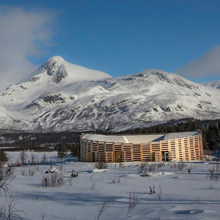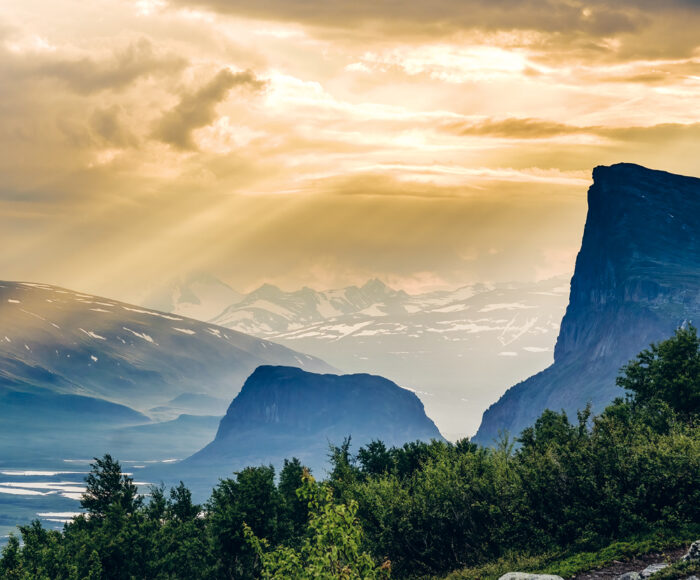 |
Laponia
Laponia is unique in so many ways. A place of universal worth both in terms of its culture and of its nature. Looking back at its history, this Sámi World Heritage holds a story for all eight seasons of the future.
|
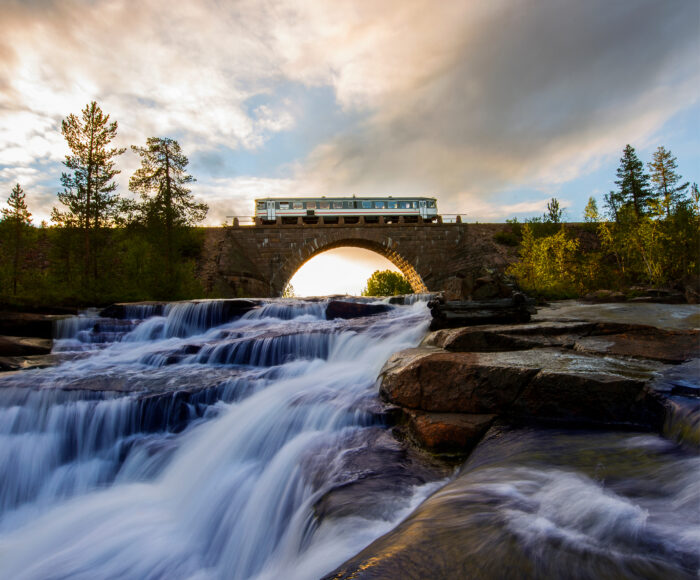 |
Railway travel
Take the train! The call becomes all the more familiar. We choose train travel for many reasons; for the environment, of course, but also for the sake of the person within us. On the train we get the chance to sit for a while and do nothing more than admire the view falling away outside the window like a long row of beautiful new dominoes. As summer is here, it’s time for you to embark on your own journey in northern Sweden.
|
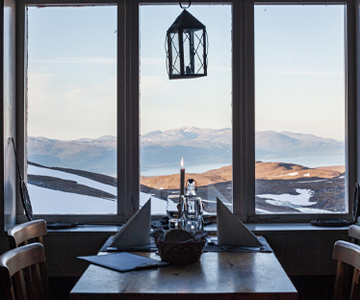 |
Gourmet hiking
Fried Arctic char and boiled potatoes, in all their simplicity. It has been a long time since I ate so well and such uncomplicated food. Yet, the delicious taste is also associated with a very simple truth: Hunger is the best spice.
|
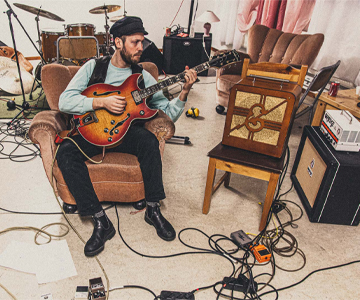 |
From joik to Airijoki
Telling a great story has always been important. In fact, some claim that homo sapiens thrived as species due to their skills in gossiping. From jojk to Airijoki, from stories to songs, this place is known for a good vibe.
|
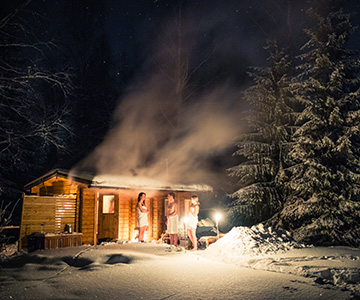 |
In sauna veritas
Sauna, or bastu in Swedish, is something as natural to people in the north as the midnight sun and the northern lights. It used to be something of a prerequisite for life in the Arctic, and now it is a rich part of the culture itself. Sauna is the essence of life up here.
|
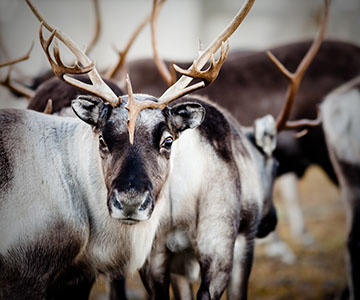 |
Visut
Our home, Swedish Lapland, has been formed by the Ice Age, the seasons and the reindeer. And we, too, have lived our lives in the shadow of the forces of nature.
|
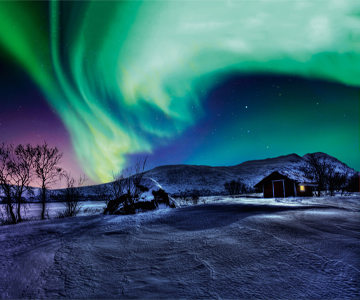 |
When to see the northern lights in Swedish Lapland
Shimmery and magical. The dance of the northern lights is a spectacular sight that we frequently enjoy in Swedish Lapland. Viewing the Aurora Borealis is both a jaw-dropping and mystical experience. But when is the best time to see the northern lights in Swedish Lapland?
|
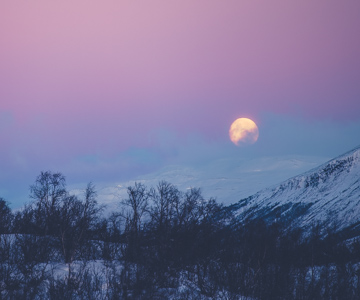 |
The Arctic light
You might think that in the Arctic, we have darkness or daylight. In the winter, the sun never rises above the horizon, and in the summer, the sun never sets. But in fact, we have light all year round. Just different kinds of light. Some darker, some brighter, and some very colourful.
|
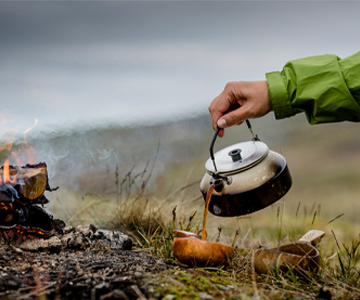 |
Coffee made by lemmings
Markus and Rolf were given the mission to bless the world with dark-roast, coarsely ground coffee. Surely, you’ve heard the story about the northern lemmings bringing coffee beans home from Africa, floating home with the Gulf Stream to roast the beans with their body heat, in the Swedish mountains? No? Well, here it is.
|
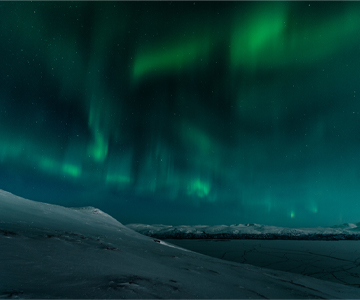 |
Photograph the northern lights
So you've gone to Swedish Lapland, Sweden's Arctic destination, to experience the magical northern lights. Here are seven tips on how to get some good pictures of the beautiful light phenomenon to take back home.
|
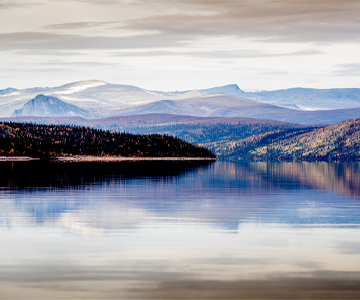 |
Shooting autumn colours
Many think autumn is the most beautiful time of year in Swedish Lapland. It's as if Earth itself grants a generous firework display of colour before the winter sleep settles over the Arctic landscape. And it's easy to capture the show with a camera on standby. These are five simple tips for capturing autumn in a photo.
|
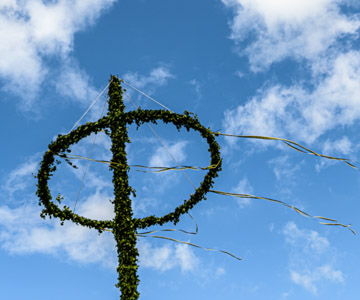 |
Midsummer
When the sun never sets, and the kids are on summer holiday. When holidays are waiting around the corner and meadows explode with wood cranesbill. That's when long lines of cars queue up to get out of the cities. It's time to go find tranquillity with friends and family in summer houses and holidays homes, away from the hustle and bustle. It's time to celebrate the most important holiday of the summer. It's midsummer.
|
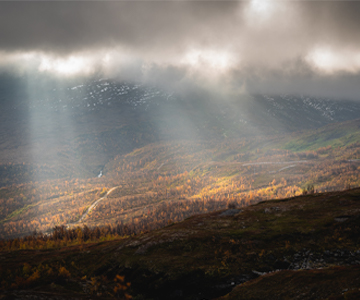 |
Stories told with names
Many towns, mountains, rivers in Swedish Lapland bear the names given to them by the Sámi people, usually describing their characteristics. When reading a map of Swedish Lapland, knowing the meaning of some Sámi words adds another, fascinating dimension to the landscape.
|
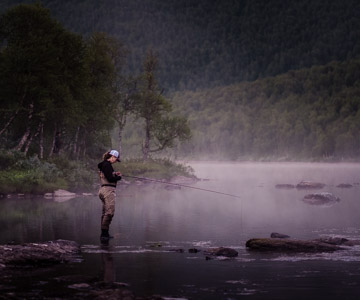 |
Out of reception
Places still exist where there's no point asking for the password for the wifi. Places where you leave your mobile behind to spend some quality time with others – or perhaps with yourself. The Sámi eco-lodge Geunja and the camp in Tjuonajokk are two of Swedish Lapland's finest places.
|
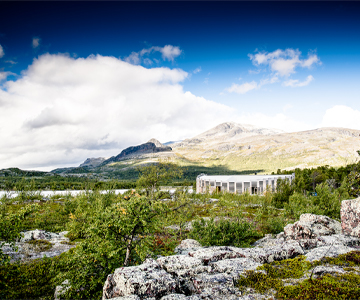 |
Anything but wilderness
On a headland called Viedásnjárgga in Stora Sjöfallet National Park lies Naturum Laponia. It's a place that tells a story of mountains on the other side of the lake and how reindeer find their way here year after year. It tells part of the story why this place was awarded the title World Heritage.
|
 |
The not-so-big five
Scouting out the 'Big Five' on the African savannah is the big dream of many. They include leopard, lion, elephant, rhino and African buffalo and is a group of large, majestic and fairly dangerous animals. Here in the Arctic part of Sweden, we don't have animals the size of an elephant or with the speed of a leopard, but we have a fair few animals that are pretty cool in their own way. Below we have listed five animals that are both unique and fascinating, definitely worth putting on a list of must-see animals.
|
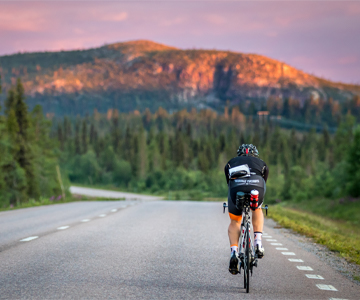 |
Swim, bike, run
Competitors from all around the world gather under the midnight sun to participate in the world's most northernmost triathlon with ironman distances; Laponia Triathlon 67N°.
|
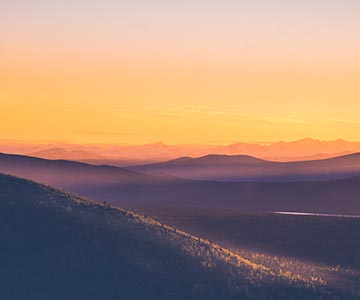 |
The midnight light
If it's your first time visiting Swedish Lapland during the summer, you'll notice that it never gets dark. You have entered the world of the midnight sun, and if you're not used to it, it's an extraordinary experience. But beware, it might affect your sleep quality.
|
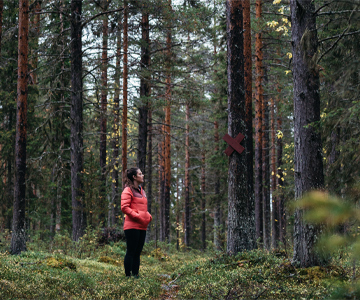 |
The forest is yours
Is it really true that anyone can walk around the forests and beaches of Swedish Lapland? Pick berries and pitch a tent anywhere? Yup, that's exactly what it's like in the democratic forest.
|
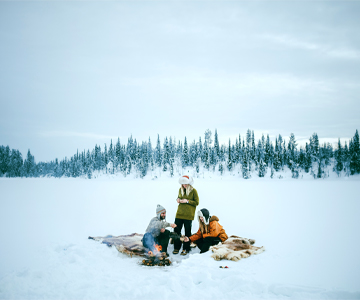 |
Outdoor fika
That Swedes have their fika (coffee and a snack), and that they drink lots of coffee, are well-known facts. But what's the thing about having it outdoors? What's the deal with coffee boiled over an open fire?
|
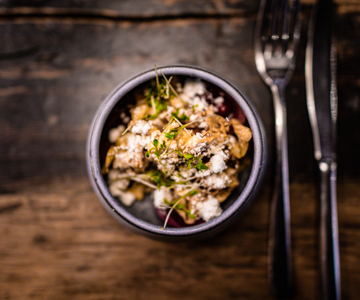 |
A road trip for the hungry
A road trip is simply a way of discovering things you've never seen before. If you give yourself the chance, you might also come across flavours you've never experienced before.
|
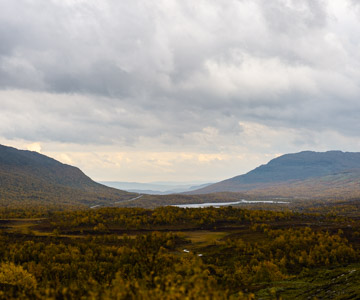 |
The taste of
Swedish Lapland
When you visit Swedish Lapland, you will notice that our food culture is closely intertwined with our lifestyle. There is a strong tradition that testifies to how we have lived from what nature has generously provided us with for many millennia. Join us on a guided tour of our natural resources, taking the shortest possible route to the plate.
|
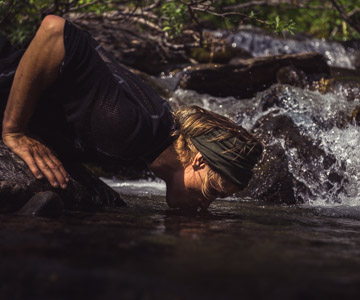 |
An unbeatable
eco-experience
Small-scale, hosting and proximity to nature. Curiosity, knowledge and learning. During her visit to Geunja the Sámi Eco Lodge in the mountain landscape surrounding Ammarnäs, Maria lived in complete harmony with nature. Something happened there, and an inner journey commenced.
|
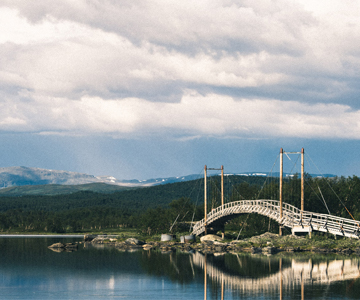 |
The King of all trails
The King's Trail runs through Sweden's most beautiful mountain scenery and provides more than 400 kilometres' worth of hiking adventure for the first-time hiker as well as the truly experienced mountain veteran. It is one of the world's most famous hiking trails, and the stage between Abisko and Nikkaluokta is the most-travelled trail in all of Sweden.
|
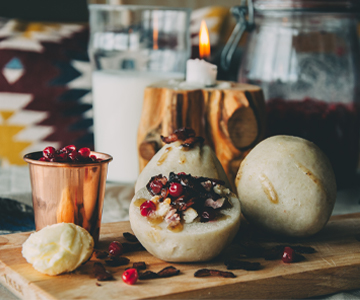 |
The way we eat
When in Swedish Lapland, exploring the nature of the Arctic, chasing the northern lights or just soaking up the sun 24/7, make sure you don’t miss out on the food. Some of the food we eat might sound a bit strange, but we highly recommend you try and get a taste of Swedish Lapland.
|
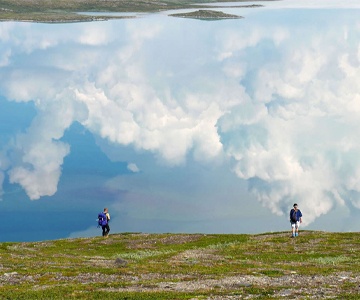 |
The higher land
The Sámi call it Badjelánnda – the higher land. It's Sweden’s largest national park, right next to the Norwegian border and a part of World Heritage Laponia. A favourite location for those who want to be on their own for a bit. It's the beginning of autumn when Håkan Stenlund sets his sights on Consul Persson's cabin. A lonesome trek back.
|
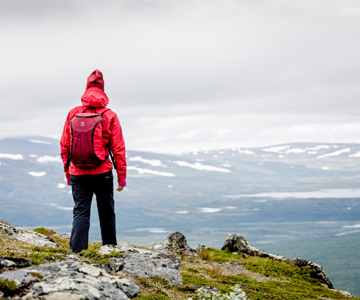 |
The hiking guide
Hiking can be an amazing experience, but it can also turn into a real challenge. Spending time in the mountains means you have to be able to rely on yourself, your knowledge and your choices. We've put together some good advice below to make sure you have an amazing – and safe – mountain experience.
|
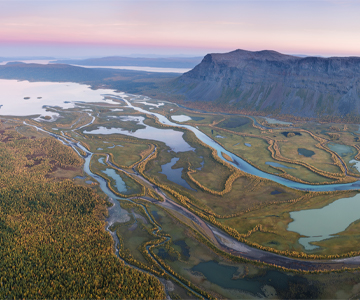 |
The national parks
National parks are areas featuring a certain type of landscape, protected to preserve their natural condition. It's about creating opportunities to experience nature. Swedish Lapland has the most, the oldest and the largest national parks in Sweden.
|
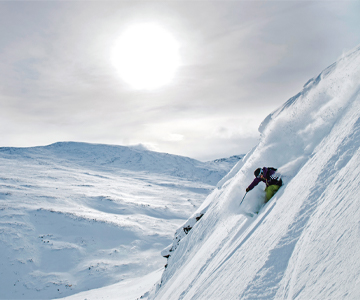 |
Hit the slopes
Being outdoors is a natural part of the arctic lifestyle, and during winter – skiing is the way to go. Pro or beginner, Swedish Lapland offers it all. You just need to find your flavour among our resorts. Here is our top five for downhill skiing like a champ!
|
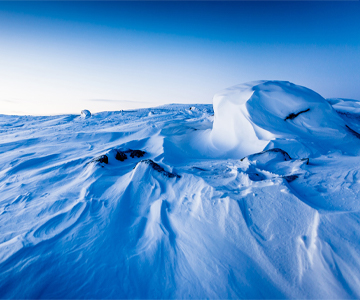 |
Muohta
Snow is something more than frozen water to the Sámi people. It's a way of expressing the foundation of their existence – the migration of the reindeer. To a skier, snow is also more than snow. It's the way you experience life.
|
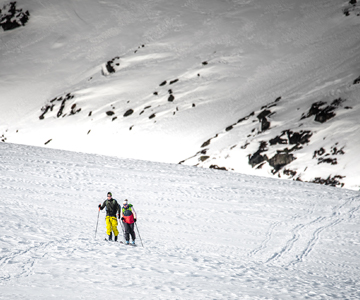 |
To the top of Nieras
The road to Ritsem through World Heritage Laponia is probably one of the most beautiful roads in Sweden. It is also an easy way to get straight to a high-mountain environment with fantastic opportunities for ski touring. The mountain Nieras at Stora Sjöfallet is an amazing and easily accessible ski touring gem.
|
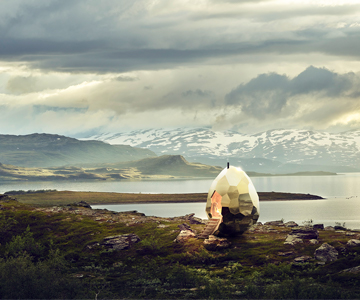 |
The travels of a Solar Egg
The sauna Solar Egg was created by Riksbyggen together with artist duo Bigert & Bergström and installed in Kiruna. Since then, the sauna has become a global success and taken on a tour around the world.
|
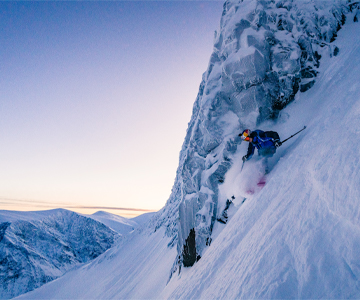 |
The master’s
playground
Kristoffer Turdell from Gällivare is a champion of Freeride World Tour, the World Championship of Extreme skiing. His scene may be all the mountains in the world, but there's still one particular run on his mind. Down Duolbagorni in Swedish Lapland.
|
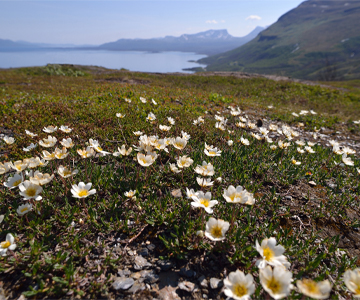 |
The mountain flora
Are you curious about what kind of plants that grow in the harsh mountain climate? Ever wondered what that cute, white flower is called that you passed several times on your hike? Göran Wallin gives you a quick guide to the flora of the Swedish Lapland mountains.
|
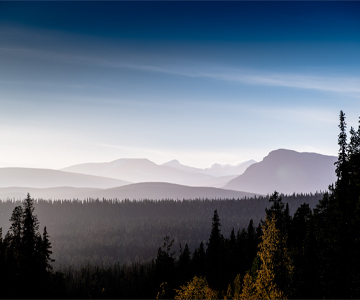 |
The eight seasons
In Swedish Lapland, nature plays an intrinsic role in our life and work, and the people here are highly sensitive to the small details of the changing seasons. Therefore, it seems only natural that the Sámi people describe eight seasons instead of four.
|
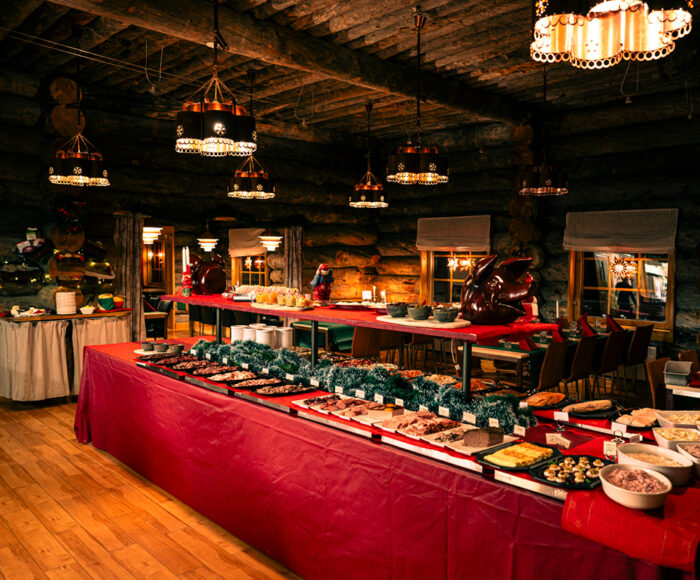 |
Christmas
It is December and the landscape is covered in a white blanket; trees are heavy with snow and the roads are white. The dense mid-winter darkness creates a blue light during a few hours, and windows are lit up by advent stars and candlesticks. Christmas is here.
|
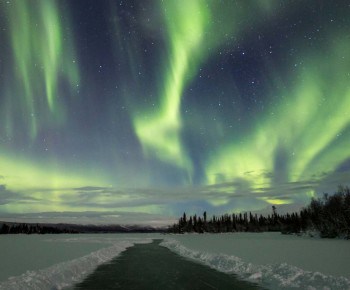 |
Skating under the northern lights
The Dutch filmmaker Marco Lubbers had a dream: To go speedskating under the northern lights. And he also wanted to make a film about it. For that, he travelled to Swedish Lapland.
|
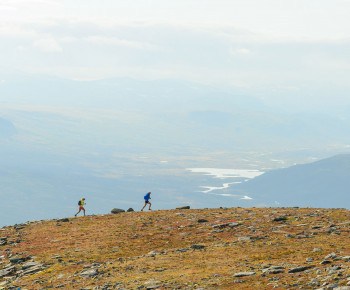 |
Trail running the King’s trail
The most common way to experience King’s Trail (Kungsleden) is walking or skiing in a comfortable pace. But there are other ways – come along on an up-tempo journey through the scenic mountains of Swedish Lapland when Krissy, Luke and Fredrik takes on the challenge of spending a week running along this famous trail.
|
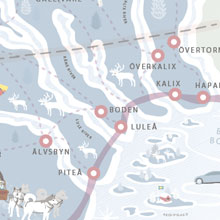 |
Towns in Swedish Lapland
Swedish Lapland is Sweden’s Arctic destination, spanning from Skellefteå in the south to Kiruna in the north. The free-flowing rivers have been a connector for all the towns and villages within the de...
|
 |
Fly here
...
|
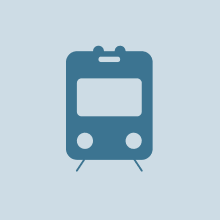 |
Go by train
In Swedish Lapland, nature is always the focal point. The vast, untamed nature that is. Like the deep forests, the highest peaks and the most furiously flowing rivers. We have it all. Besides, it's no...
|
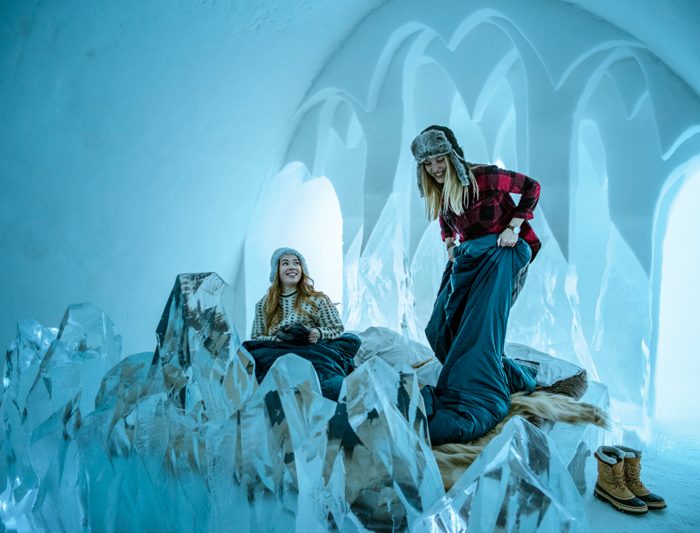 |
18 prICEless reasons
The importance of ice in Swedish Lapland extends far beyond the hype of Icehotel. At the beginning of time, after the inland ice retracted, the ice on lakes and running water was already an important ...
|
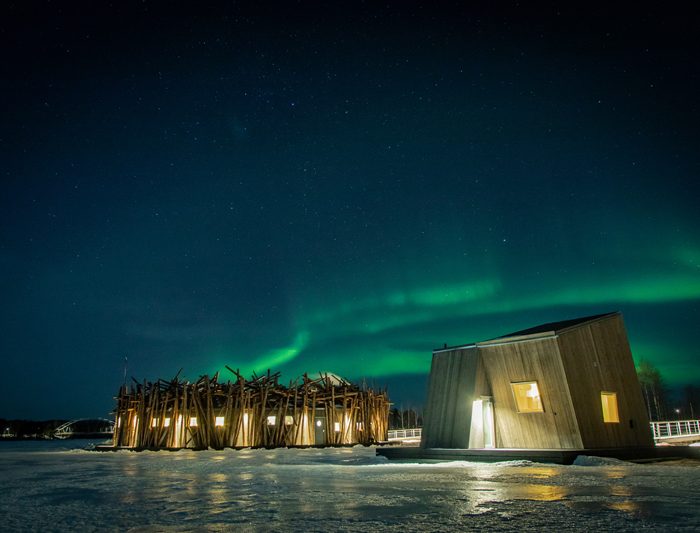 |
10 cool places to see the northern lights
Great spots where the chances of seeing the northern lights are good, and also, awesome places to stay...
|
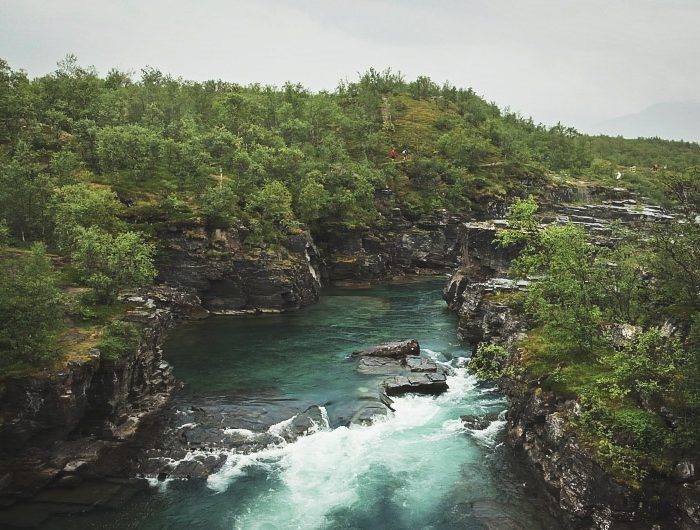 |
No car needed view points
Swedish Lapland is huge and of course, travelling by car is the easiest option. But not to worry, there are some lovely places you can get to using alternative means of transport. We have listed five ...
|
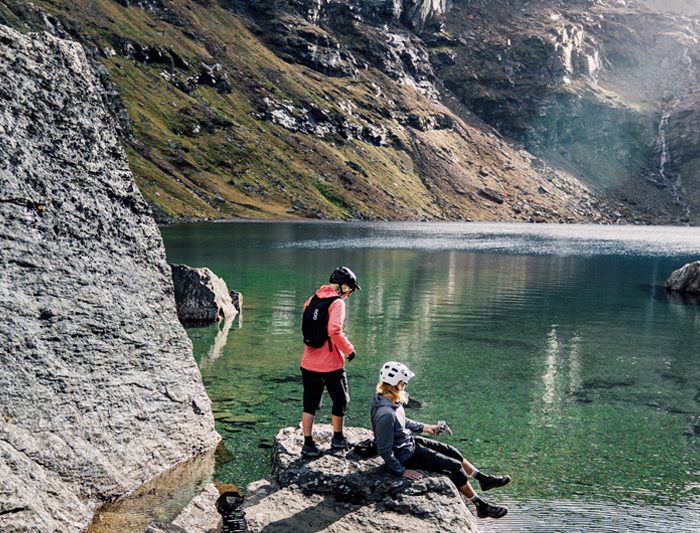 |
Into the water
Swedish Lapland is Sweden’s Arctic destination. It’s also more than a quarter of Sweden. This gives us a fair few unique geographical spots, so of course, we can also offer some of the most interestin...
|
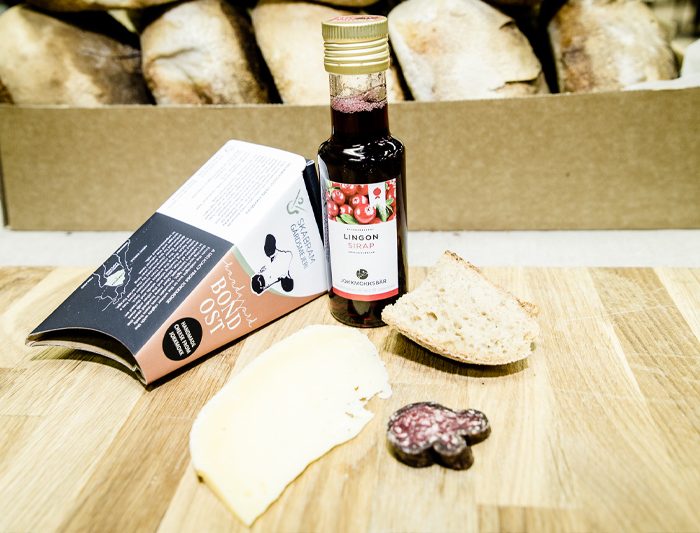 |
Souvenir tips
Take a little piece of Swedish Lapland home with you. Are you en route to Swedish Lapland, wondering what souvenirs to shop for? We've listed some helpful tips for you...
|
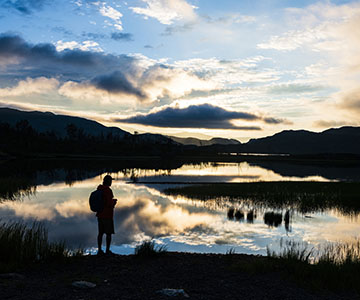 |
8 magnificent view points
There are many mountains and hills to climb in Swedish Lapland. You can get to the top of Dundret by car, while Kebnekaise takes days of hard effort. What these peaks have in common is an amazing view...
|
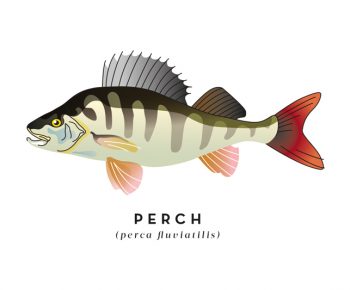 |
10 fish to catch
Here are ten fish to hook up with in Swedish Lapland...
|
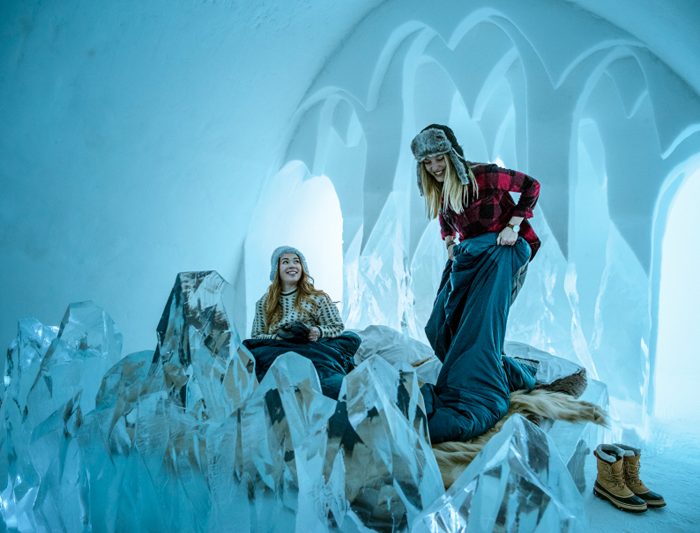 |
10 cool stays in Swedish Lapland
Known for a bit quirky, small scale and up close and personal stays, Swedish Lapland has a lot to offer the curious traveller...
|
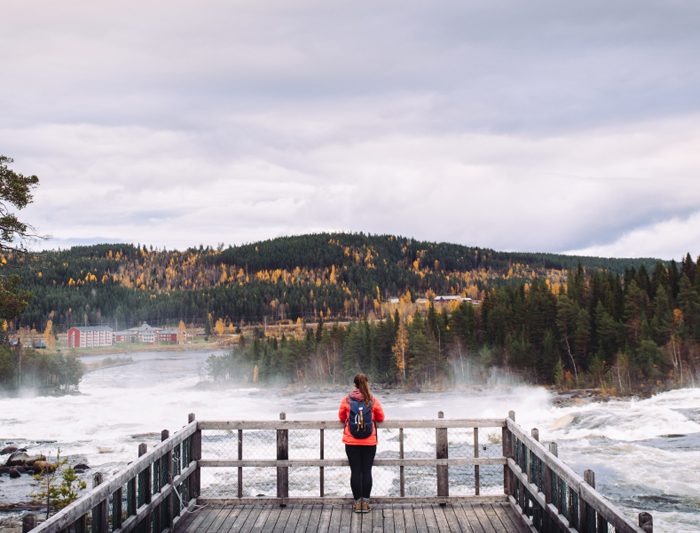 |
Places to check out along the road
Swedish Lapland is full of spots well worth a visit. We have listed six places you must not miss when travelling by car...
|
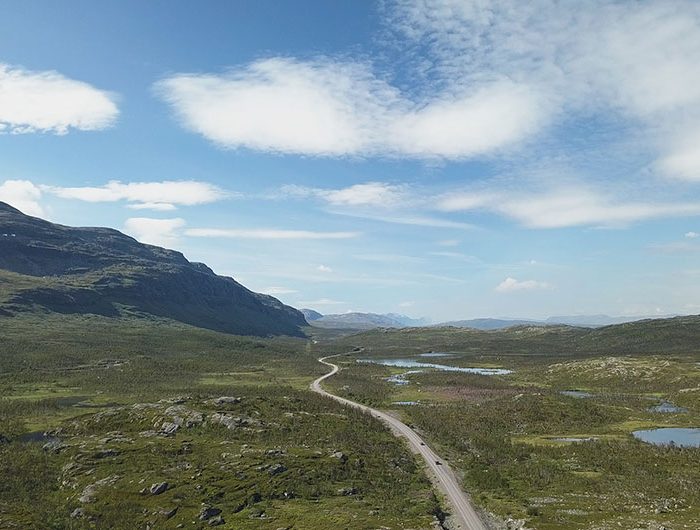 |
Top 5 scenic routes
There are plenty of scenic routes, or simply beautiful roads, in Swedish Lapland. We have listed five of them that will make a journey from a to b something more than just transport. Perhaps the road ...
|
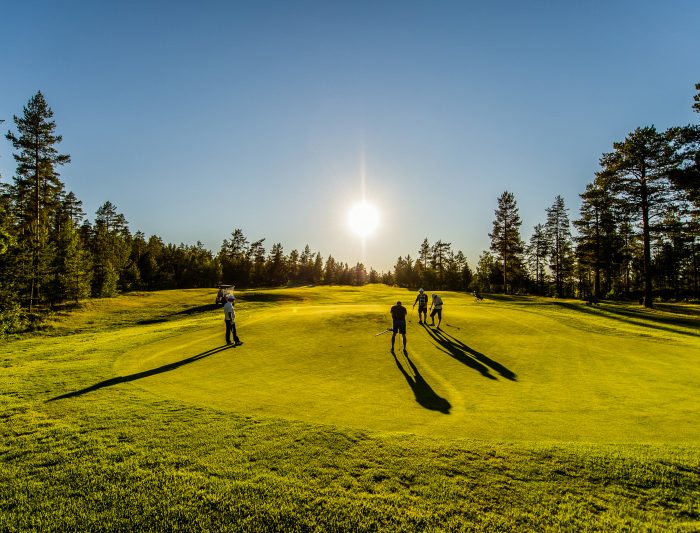 |
13 ways of loving the midnight light
The season with midnight light in Swedish Lapland is around 100 days long. You play golf in the middle of the night, you take a swim when you feel like it and those who have never experienced the midn...
|


















